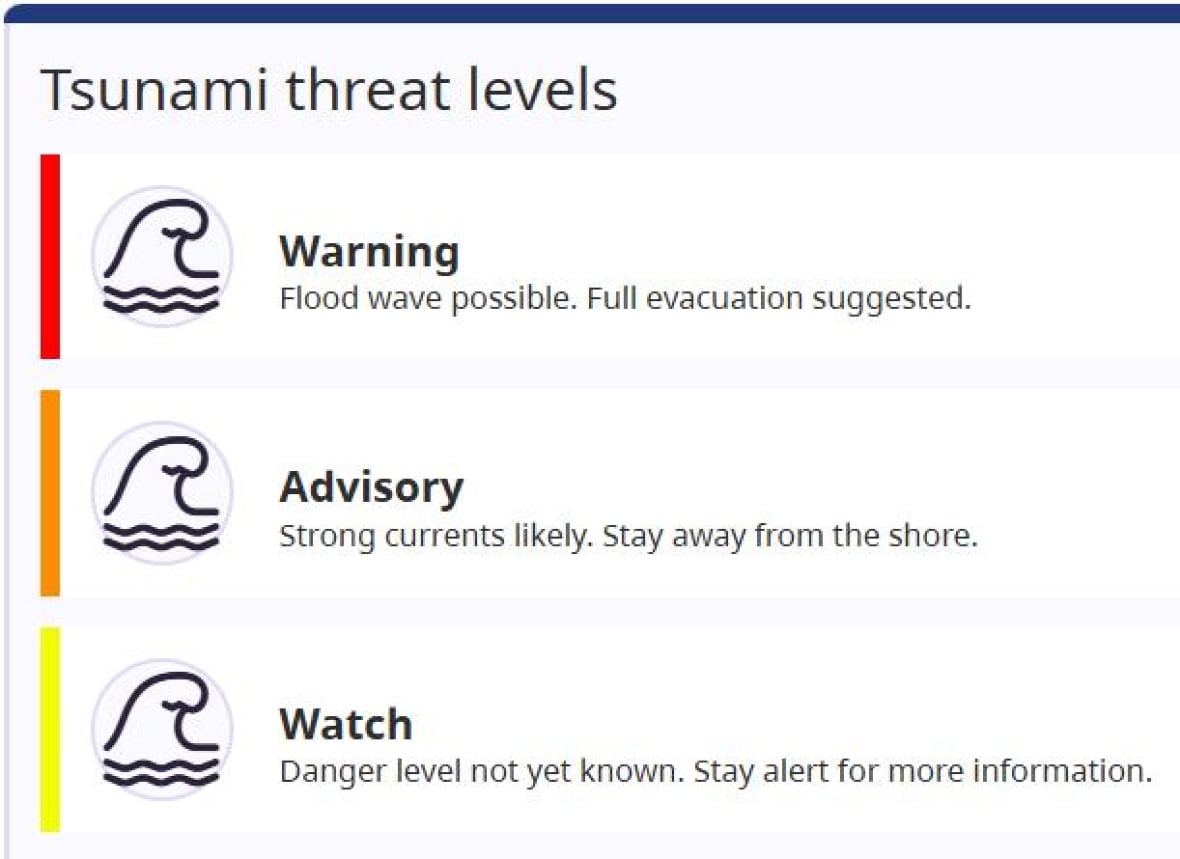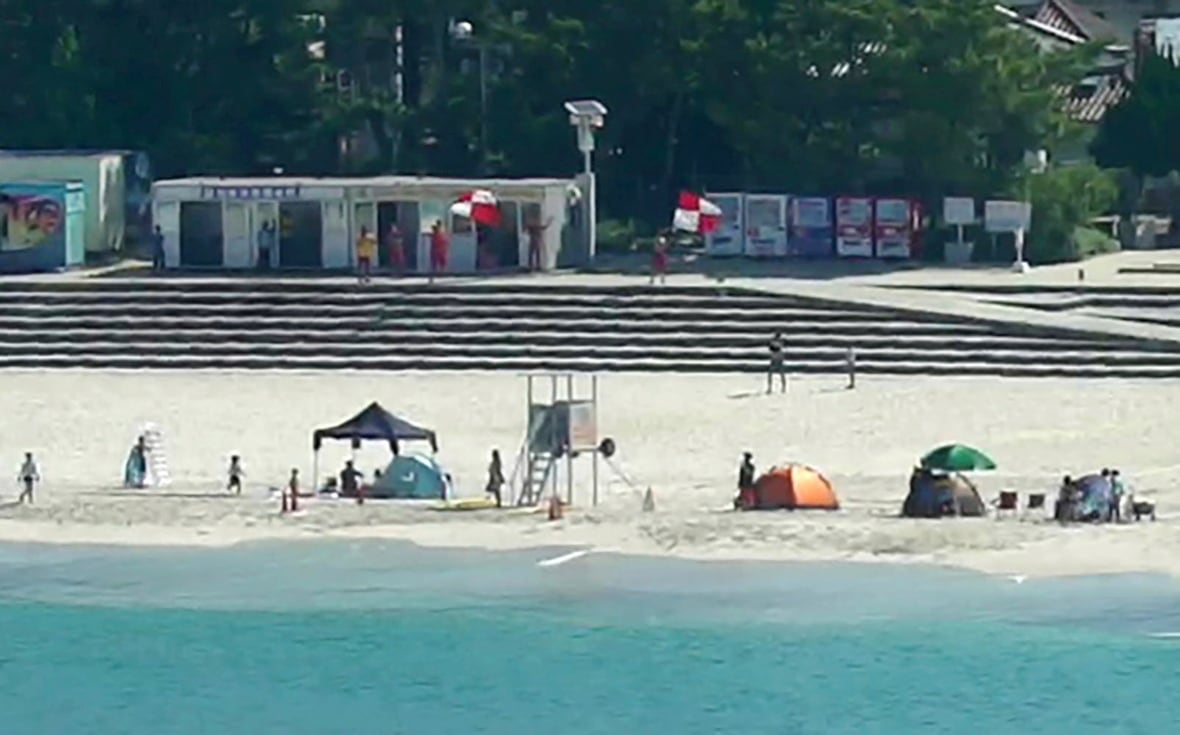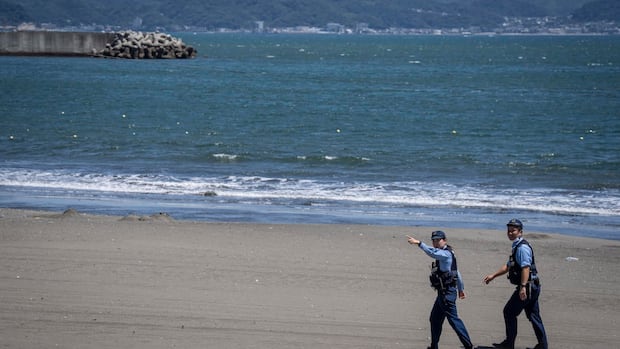The tsunami warning system worked, but expert says people still need to stay alert
Advisory cancelled for B.C. coast after massive earthquake struck off Russia

As one of this century's most powerful earthquakes generated tsunami warnings and advisories across a swath of the Pacific early Wednesday — including along the B.C. coast — a risk assessment expert says the warning system worked just as it was meant to.
"The good thing is that all the countries around the Pacific ... reacted promptly," Katsu Goda, a Canada research chair and expert on earthquakes, tsunamis and risk assessment from Western University, told CBC News Network Wednesday morning.
The earthquake struck off Russia's sparsely populated Far East early Wednesday, sending tsunami waves into Japan, Hawaii and the U.S. West Coast. Several people were injured, but none gravely, and no major damage has been reported so far.
Authorities warned the risk from the 8.8 magnitude quake could last for hours, and millions of people potentially in the path of the waves were initially told to move away from the shore or seek high ground.
In B.C., for instance, a tsunami advisory, upgraded from an earlier watch, was issued for the north and central coasts, including Kitimat and Bella Coola, Haida Gwaii and the west and northeast coasts of Vancouver Island. It also spanned the Juan de Fuca Strait from Jordan River to Greater Victoria, including the Saanich Peninsula.
A tsunami advisory means residents should move away from the ocean and stay alert for more instructions from officials.
"I think that's appropriate, and then we just have to be aware and be away from the waters," Goda said.
A tsunami warning, which is the highest level, means that residents should move away from the water immediately. A watch means people should stay alert for more information.

Warnings downgraded
Warnings are now downgraded in most areas. The National Tsunami Warning Centre cancelled its tsunami advisory for coastal B.C. early Wednesday, which stretched from the B.C.-Washington border, north to the B.C.-Alaska border.
The alert, sent at 6:20 a.m. PT, noted that a warning remained in effect in parts of California, along the coast from Humboldt/Del Norte Line to the Oregon-California border. Advisories remained in effect for the California coast from Rincon Point (near Santa Barbara) to Humboldt/Del Norte Line, including San Francisco Bay. Parts of Oregon, Washington state, and the Aleutian Islands off Alaska remained under advisory.
People still need to be cautious, Goda said, explaining that the tsunami waves in the Pacific can go back and forth for "potentially days." And if people aren't alerted, a fast wave could potentially sweep people in the water out to sea.
He added that there can be a risk, especially in more remote areas or First Nation communities, that people may not get the warnings or may not heed them, but that doesn't seem to be the case this time.
"At this point I think everything is in order."
'So important ... to be prepared'
The earthquake appeared to be the strongest recorded since the 9.0 magnitude earthquake off northeastern Japan in March 2011 that caused a massive tsunami and set off meltdowns at a nuclear power plant. The International Atomic Energy Agency said initial reports showed Japan's nuclear plants were not affected Wednesday.
Only a few stronger earthquakes have ever been measured around the world. Wednesday's occurred along the Pacific Ring of Fire, a series of seismic faults around the Pacific Ocean where most of the world's earthquakes take place.
The Ring of Fire runs through a number of countries, including Chile, New Zealand, Japan, Canada, the western United States and Mexico, according to Natural Resources Canada (NRCan).
And those regions are at an increased risk not just for earthquakes and tsunamis, but also volcanos and landslides, John Cassidy, an earthquake seismologist with Natural Resources Canada, told CBC News Network.
"It's so important to know what might happen and be prepared for those events in the future," Cassidy said.
How warnings work
NRCan says when there's seismic activity, it forwards selected seismic data from the Canadian National Seismograph Network to the United States' National Oceanic and Atmospheric Administration National Tsunami Warning Center (NTWC) in Palmer, Alaska.
From there, the NTWC issues tsunami messages for all U.S. and Canadian coastlines and the British Virgin Islands, including alerts and alert cancellations. They use preset criteria to "produce and issue messages as early as possible, even before a tsunami is detected," the NRCan website says.
They also use seismic data analysis, tsunami forecast modelling and historical tsunami information to estimate the impact, then produce and issue updates every 30 minutes.

Every tsunami is different, and they can actually have more dangerous effects further away from the earthquake, Cassidy added. It all depends how the energy is being pushed out from the earthquake source, he said.
"There's a lot of details that go into controlling the impacts of a tsunami and it's relatively easy to calculate the arrival time, but getting the amplitude of the waves is much more challenging," he said.
"And a tsunami is not just one wave. It's a series of waves. It continues for hours, which is why we see these advisories and watches and warnings stay in place for so long."
With files from The Associated Press and Reuters



